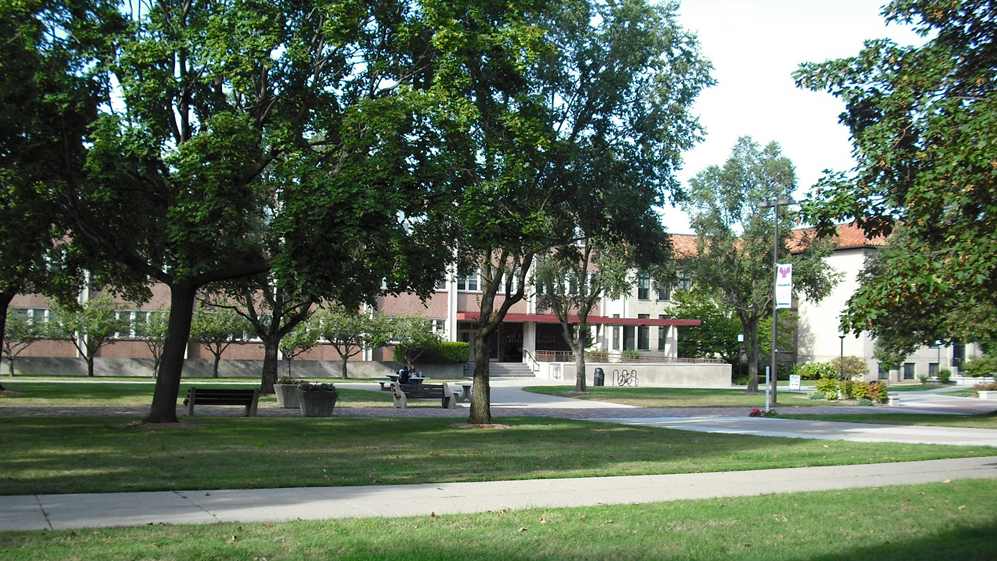We hear so much discouraging news about today’s youth that it’s worth pausing a moment to look at some of the good news that is beginning to leak out. There is no doubt that moral relativism permeates much of American youth today, but at the same time, increasing numbers of the young are turning to religion for guidance, many have turned away from Obama, and many have rejected the “hook-up” culture that prevails on many college and university campuses. What is perhaps most surprising is that American youth have become increasingly pro-life. This suggests that the American youth can be reached and are being reached by dissident, counter-cultural, religious and conservative voices.
The millennial generation went overwhelmingly for Obama in 2008 and 2012. The youth vote, 18- to 26-year-olds, did not increase as a percentage of the overall vote in either year. The Obama machine adeptly targeted this demographic group in key swing states through voter registration drives in college towns to increase the Democratic Party vote. The strategy paid off. Although Romney succeeded in capturing 51% of the under-30 white voters in 2012, that was not enough to compensate for the increasing numbers of non-white young voters, most of whom preferred Obama. However, after eight years of Obama, poor employment prospects, high student debt and broken promises, many younger millennials— those too young to vote in 2008—are not captivated by Obama, and those older millennials who did vote for him are less enraptured with this politician who promised hope and change. Now both younger and older millennials are just hoping for change. Even more surprising, the young people who voted for Romney in 2012 are much more enthusiastic in their Republican affiliation for the coming elections.
Evolving Church Affiliations
When riots by unemployed youth swept across Britain in the summer of 2011, Pope Benedict XV warned that “moral relativism” had penetrated British society to such a degree that many people no longer shared values and were confused about what constituted wrongful actions. He declared, “When policies do not presume or promote objective values, the resulting moral relativism tends instead to produce frustration, despair, selfishness and a disregard for the life and liberty of others.”
Pope Benedict’s warning about “moral relativism,” especially among the youth, should be taken seriously by all Western democracies. Moral relativism does afflict much of today’s American youth culture, but there are signs that not all has been lost. Like much of American culture, American youth culture is bifurcated, with secularists at one end of the spectrum and religious traditionalists at the other end.
Surveys show that Americans have become less religious over the last couple of decades in their practices and beliefs. Mainstream Protestant churches—Episcopal, Methodist, American Baptist and United Church of Christ— have declined dramatically in membership. From 1972 to 2010 a significant decline in religious affiliation has occurred. The decline of religious participation and belief is especially pronounced among the youth.
Yet this general decline in religious affiliation can be misleading. Evangelical Protestant church membership has grown over the last three decades. Although there has been a slight decline in the growth rate in recent years, these churches are still attractive to many American youth. Many young Americans have turned to evangelical Christianity as a way to bring order and belief to their lives. Moreover, many of these young people are much more conservative on social issues such as homosexuality, homosexual marriage, and abortion than the older generation of evangelicals.
Roman Catholics have a higher proportion of young adults than do any of the Protestant traditions—around 55 percent! A new generation of St. John Paul II Catholics has emerged, playing important leadership and lay roles in the Church. More than a dozen Catholic high schools in the U.S. bear John Paul II’s name. Newman Centers for young Catholics across college campuses are vibrant and have grown in attendance. At the University of Nebraska-Lincoln and North Dakota State University, hundreds of students participate in Corpus Christi processions to show their reverence for the Blessed Sacrament. Furthermore, traditional religious seminaries and orders appear to be growing. These younger priests and nuns profess religious orthodoxy and are more politically conservative than are middle-aged priests.
Critical to this religious revival among today’s non-clerical youth is marriage. On a positive note, married men and women are more likely to attend religious services than unmarried men and women. This cuts across age groups. Religious attendance of younger Americans is about what it was in the 1970s. Young never-married men and women are less likely to attend service regularly. The difference between religious attendance in the 1970s and today is that there are fewer married couples in the general population.
Women—Catholic and Protestant—attend church services more regularly than do men. Women who attend religious services tend to be married (60 percent). Most have children (73 percent). Put more directly, those who go to church regularly will likely be married and have children. They also tend to be younger. Adults ages 21-45 make up 40 percent of adherents of every major faith.
Why Our Campuses Aren’t a Lost Cause
There is continual talk about the “hook-up” culture on college campuses these days. This hook-up culture is more than sexual promiscuity on campuses. A number of books, including Donna Freitas’s The End of Sex: How Hookup Culture is Leaving a Generation Unhappy, Sexually Unfulfilled, and Confused about Intimacy (2013) shows in shocking and morbid detail how many college students are having sex with partners without any pretense of intimacy or commitment.
This hook-up culture is reinforced by widespread drinking found in most college towns. University and college administrators have tried to discourage college drinking, but clearly not effectively. Alcohol is the facilitator in maintaining this sexual culture. Alcohol is the chief culprit in the problem of date-rape that has garnered so much publicity and has led federal officials to impose new mandates on colleges to prevent rape, sexual assaults, unwelcome sexual advances, and an alleged culture of a campus “war on women.” Researchers found that nearly a quarter of first- and second- year college students had sex with someone they had just met when they were under the influence of alcohol.
As for addressing the perils of casual sex among college students, or for that matter, teens—problems such as unwanted pregnancy, sexually transmitted diseases (STDs) and psychological trauma—school administrators offer sex education classes that favor the how-to’s or why-nots of sex. This approach is found in first-year college orientations that discuss birth control, STDs and sexual assault. This approach actually reinforces the notion that the hook-up culture is the norm. As Freitas observes, such an approach suggests to students that all they can do is protect themselves against the worst excesses of the hook-up culture.
Yet beneath this promiscuous scene rests another culture found among traditionally minded students. For one thing, Freitas found that the hook-up culture which dominates at secular and, yes, some Catholic colleges does not exist at evangelical colleges. Instead there is found a purity culture. This culture is heterosexual and revolves around waiting to have sex—or in some cases even a kiss—until marriage.
Moreover, for all the media talk about this hook-up culture, which some feminists have seen as liberation for women, studies suggest that many students are not wild about hooking up. Freitas found that once students, both female and male, began talking about their experiences, they expressed sadness and even despair about hooking up. Once these students discovered they were not alone in their feelings, they talked about how they wanted intimacy and long-term relations.
Hidden beneath these figures about the prevalence of a hook-up culture are revelations that a surprising number of students have separated themselves from this culture. An online survey conducted by Freitas shows that 31 percent of females answering the survey at Catholic and secular universities identified themselves as virgins, and nearly 34 percent of men, and 21 percent of seniors (men and women) reported that they were still virgins. Furthermore, in the survey of more than a thousand students at Catholic and secular institutions, 50 percent said they strongly disagreed or somewhat disagreed that casual sex was acceptable. Over 40 percent felt strongly that to engage in sex they needed to be in a committed relationship. Close to three-quarters of the respondents felt that sex should be more than just a purely physical experience, exactly the opposite of what hook-up culture is supposed to be about.
The Shifting Sands of Youth Politics
These surveys show that things are not totally going to hell in a handbasket on college campuses—at least not outside the classroom. But there is good news when it comes to politics among today’s youth. Mainstream media hyped the youth vote for Obama in 2008 and 2012, but today’s left is less sanguine about this bandwagon-inducing narrative. Indeed, the New York Times warned in July that the youth vote might be up for grabs, in a headline that read “Why Teenagers Today May Grow Up Conservative.” The point of the article was that younger millennials are “coming of age with a Democratic president who often seems unable to fix the world’s problems.” What an understatement—“often seems unable to fix the world’s problems”? Perhaps a more accurate statement should be that Obama is unable to fix the world’s or America’s problems which his domestic and foreign policies have made worse.
The left should be concerned that their support among the young is eroding. Although the millennial generation played a big role in 2008, the number of young voters identifying themselves as Democrat has begun to shrink, and those who are Democrats today are far less enthusiastic about their party. In 2008, party affiliation among the millennial generation reached a whopping 62 percent to 30 percent margin in favor of Democrats over Republicans. By 2009, this margin had shrunk to 54 percent to 40 percent. This coincided with a sharp decline in Obama’s job approval rating among millennials, as well as older age groups. By early February 2010, as the Pew Research Center reports, the president’s approval rating among young voters stood at 57 percent approval, compared to 43 percent general approval. More recently, a Harvard University Institute of Politics survey of young Americans’ attitudes toward politics showed that only 41 percent of 18- to 29-year- olds approved of Obama’s performance, while 53 percent indicated that they disapproved. This drop has occurred among young male and female voters and young white, black and Hispanic voters. Less than 14% of young Americans believe that the country is headed in the right direction.
The news gets worse for Democrats in this study: of those young voters who cast ballots for Obama in 2012, 17 percent said they would not support him if they could recast their votes today. On specific issues, things don’t look any better for the Democrats. When young Americans between the ages of 18 and 29 were asked if they approve or disapprove of the comprehensive health reform package signed by Obama in 2010, a solid majority disapproved of the Affordable Care Act. Only 20 percent said they planned to enroll in the program and an overwhelming majority (5 to 1) believe that health care costs will go up with Obamacare and the quality of care will decline. Furthermore, those who voted for Romney in 2012 are far more enthusiastic about voting Republican than those who voted for Obama are about voting for the Democrats in 2014 and 2016. Obama has left his young voters disappointed and demoralized. The majority of young voters still lean Democratic, but the battle for the youth vote is increasingly up for grabs. Remember that Ronald Reagan won the youth vote in 1980. It can be done.
Declining Youth Support for Abortion
Democrats are hoping to keep the youth vote by playing up their version of the social issues: gay marriage, legalization of drugs, and the “war on women.” Most young voters, although not all, support gay marriage and many are for legalization of marijuana. Abortion, though, is another matter altogether. Support for making abortion broadly illegal is growing fastest among young adults. Democrats know this, so they want to make the war against women about contraception, not abortion. A Gallup survey of public opinion trends on abortion conducted in 2010 showed that young adults (aged 18-49) and middle-aged adults (aged 50-64) have converged in their opposition to unrestricted legal abortion. For both age groups, support for abortion on demand stands around 25 percent.
The sharpest decline in support for unrestricted abortion has come in the 18- to 29-year-old group, dropping from a high of 36 percent support in 1994 to 24 percent in 2009. Moreover, the support for “illegal under all circumstances” has risen among this age cohort from 14 percent to 23 percent. Those supporting legal abortion only under certain circumstances represent a majority (51%) of young Americans. If the left wants to make the war on women about abortion, they will find themselves in trouble with young voters. Even more disconcerting for Democrats are surveys among teenagers. As early as 2003, a Gallup poll showed that over 87 percent of teens aged 13-17 thought abortion was morally wrong. Among those teens who attended church, 91 percent believe abortion should be legal only under certain circumstances (51 percent) or illegal in all circumstances (40 percent). The pro-life message has reached the young.
Religion is playing a significant role in this political shift occurring among the young. As we know, there is a sharp divide in the electorate among those who attend church and those who don’t. Self-identified “conservatives” have increased among those going to church, especially the young.
Those young people who go to church regularly tend to be more involved in their communities and give social and national issues a higher value than money. While secularized youth express concerns for social justice, it turns out that mouthing a commitment to justice is easier than acting on their beliefs. Studies show that among secularized youth, concerns for social justice remain abstract, touching issues like “climate change,” war, economic inequality and so forth. But when it comes to acting on these beliefs, few of the secularized youth are involved in political or social causes. In a sense, these young secularists don’t suffer from moral relativism per se. They profess values which reflect what they have been taught by their teachers from an early age. They are for racial justice, environmental justice, individual fulfillment, hemming in corporations and a generalized concept of equality. It’s all vague, without deep moral or religious foundation. They voice concerns about these abstract concepts, but don’t act on them. It’s a lot easier to text one another with righteous indignation about injustice than to become involved in their communities.
This is not the case for young married evangelical Christians. In surveys they rate helping the poor as a higher priority in their lives than do young non-church goers. These young married evangelicals are involved in their communities through food kitchens, clothing drives, tutoring the disadvantaged, and other work for real— Christian—social justice.
Behind all these figures rests a single important message for Christian conservatives: Morals do matter in politics. The young are looking for leadership and many are dissatisfied with the current social and political culture. Conservatives can win this battle. Real hope and productive change are on our side.







